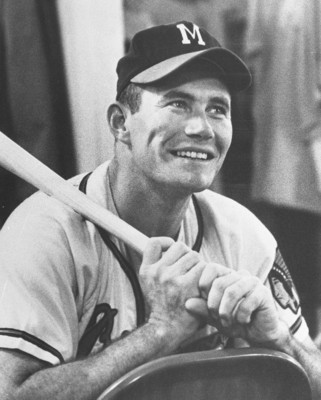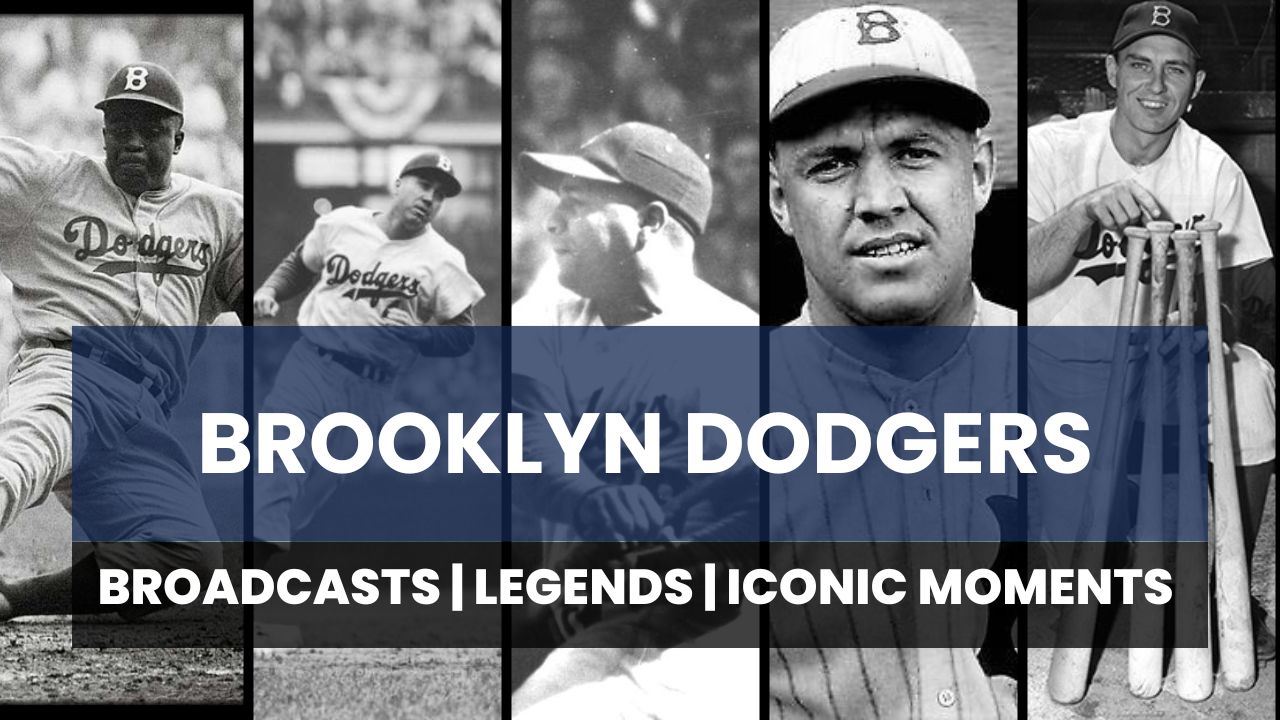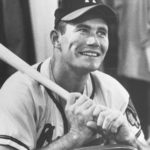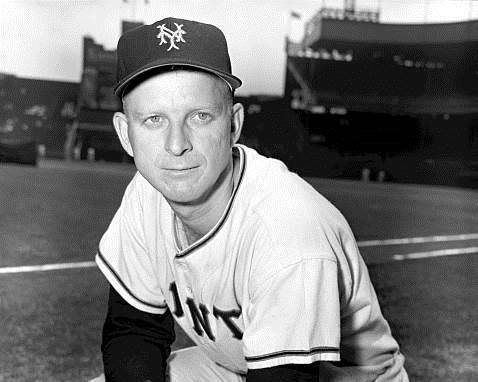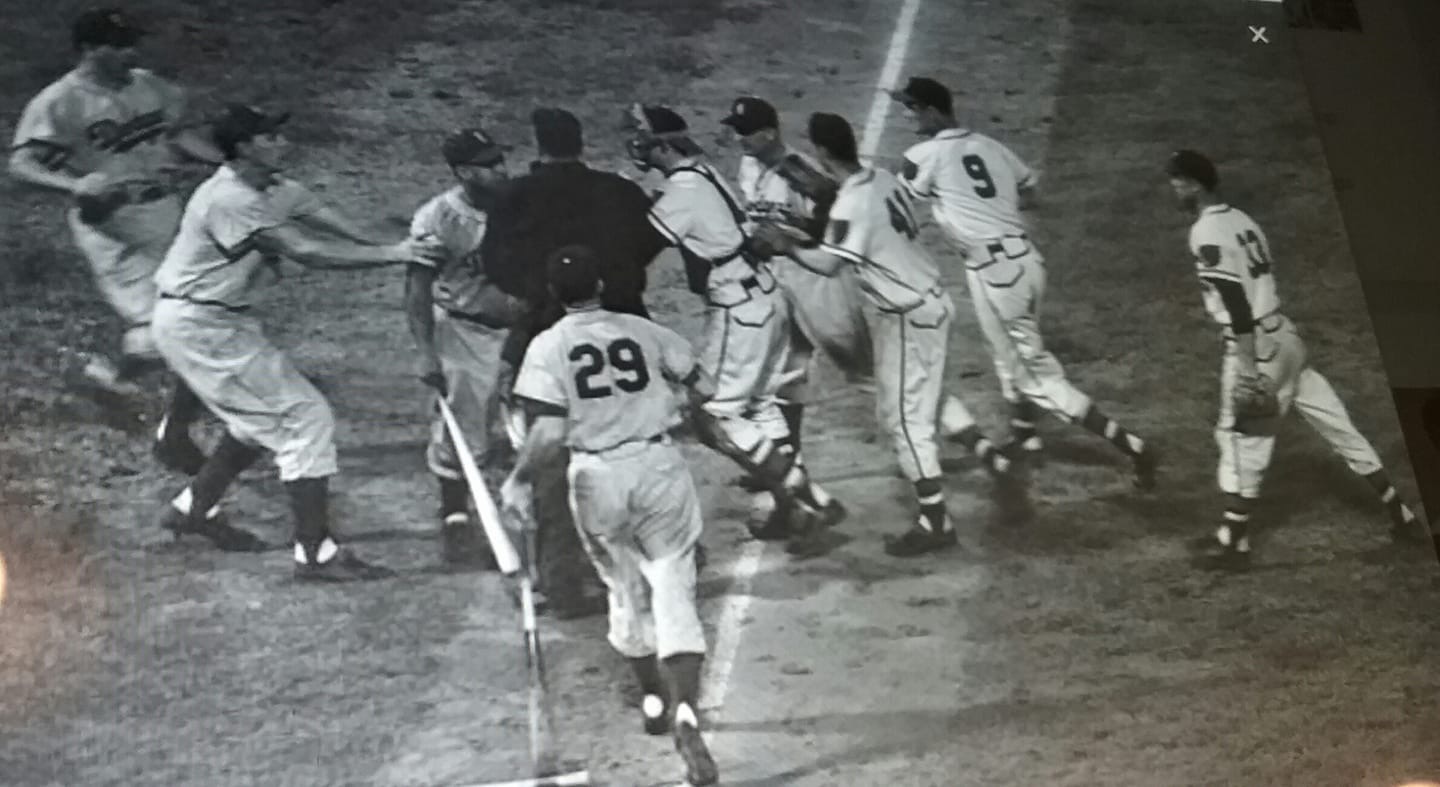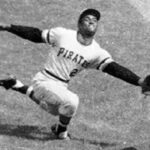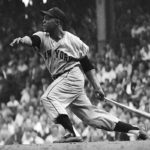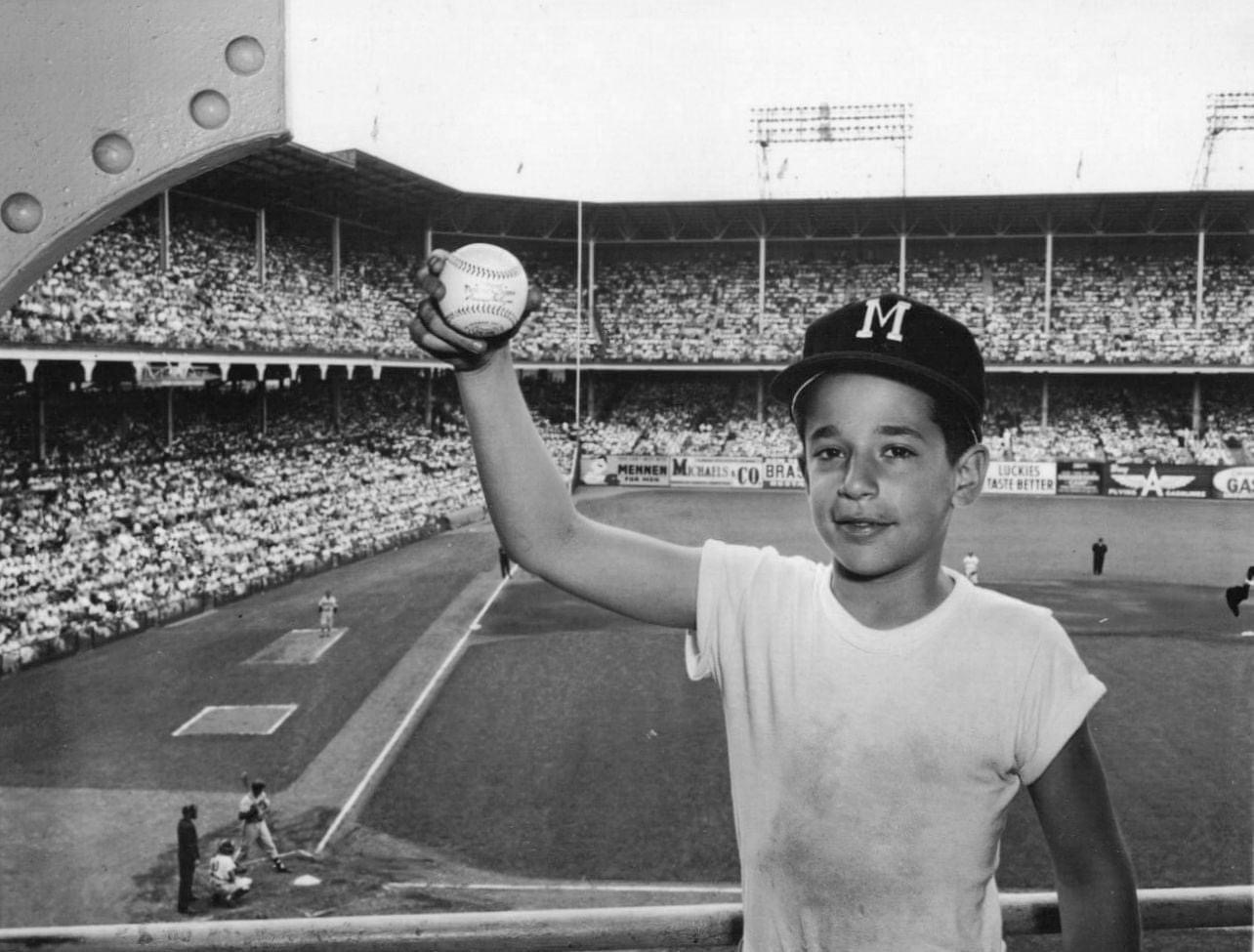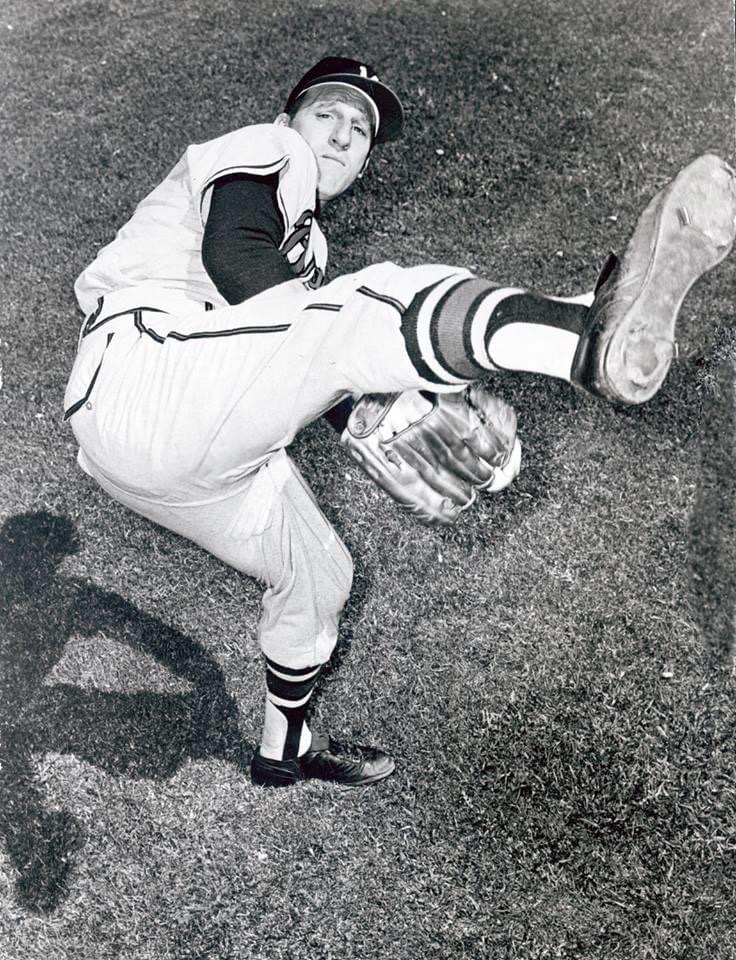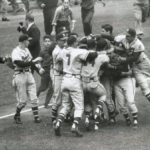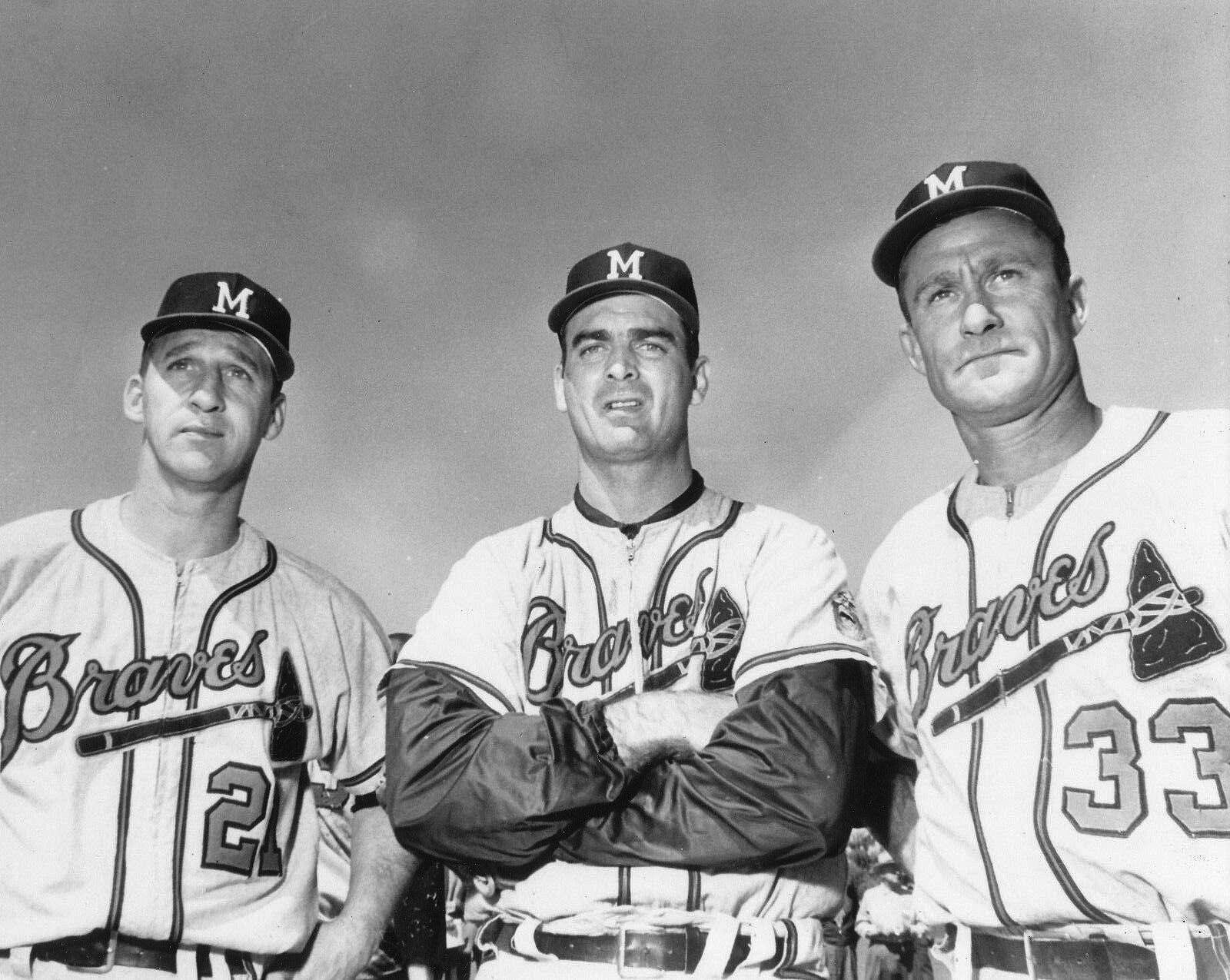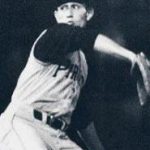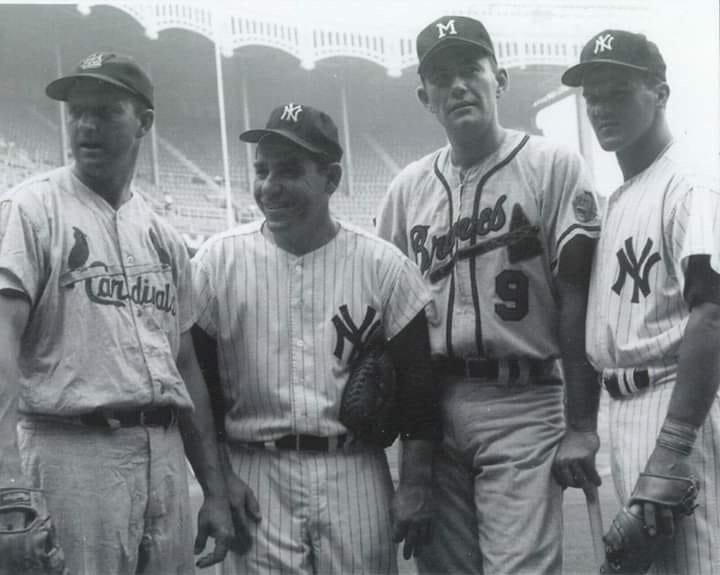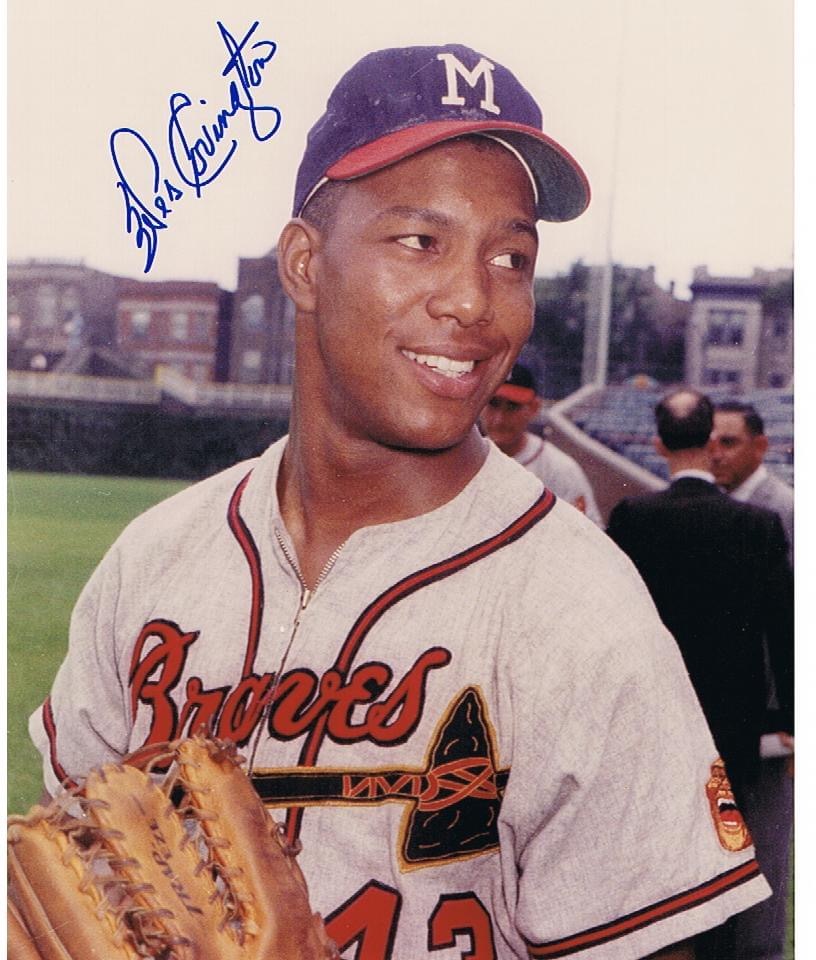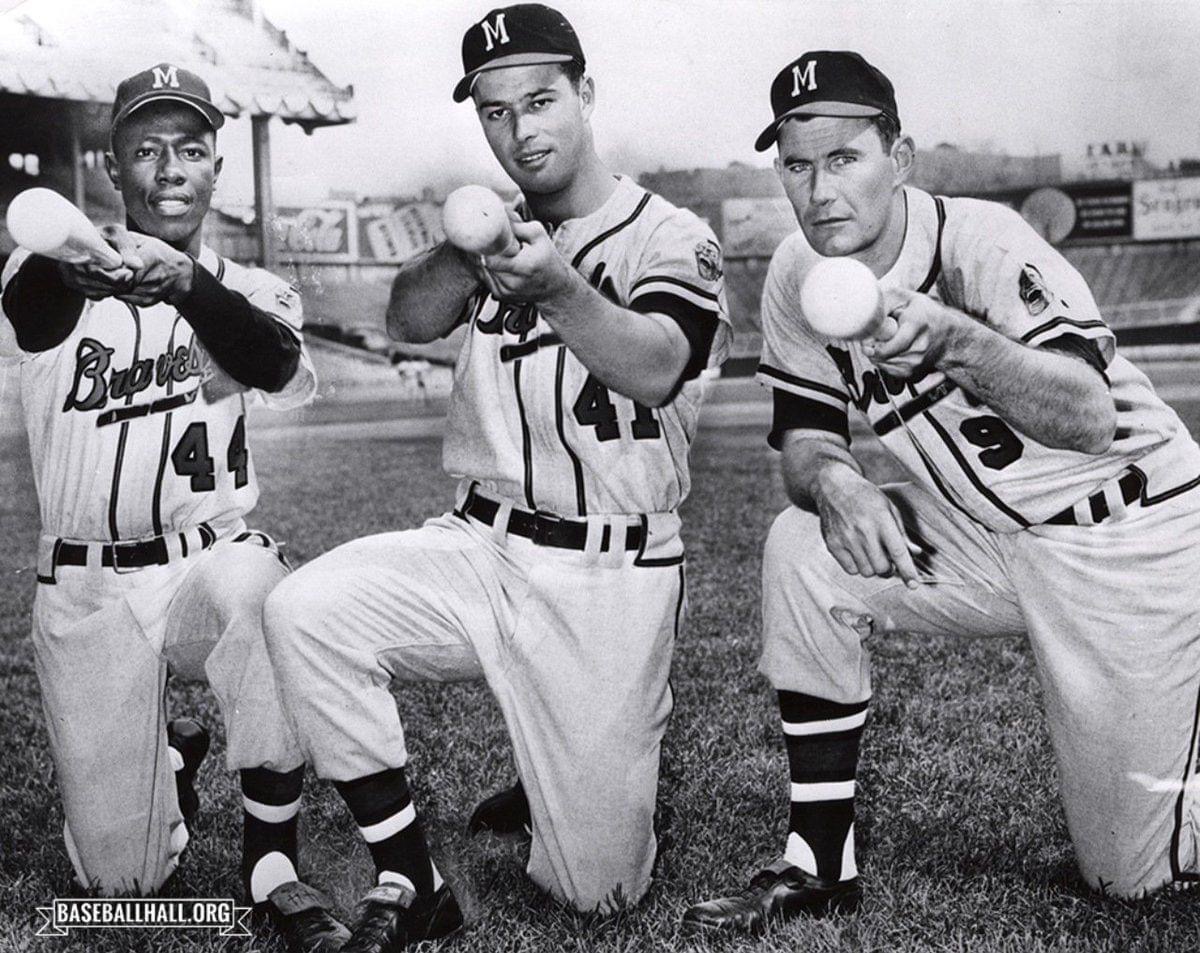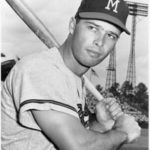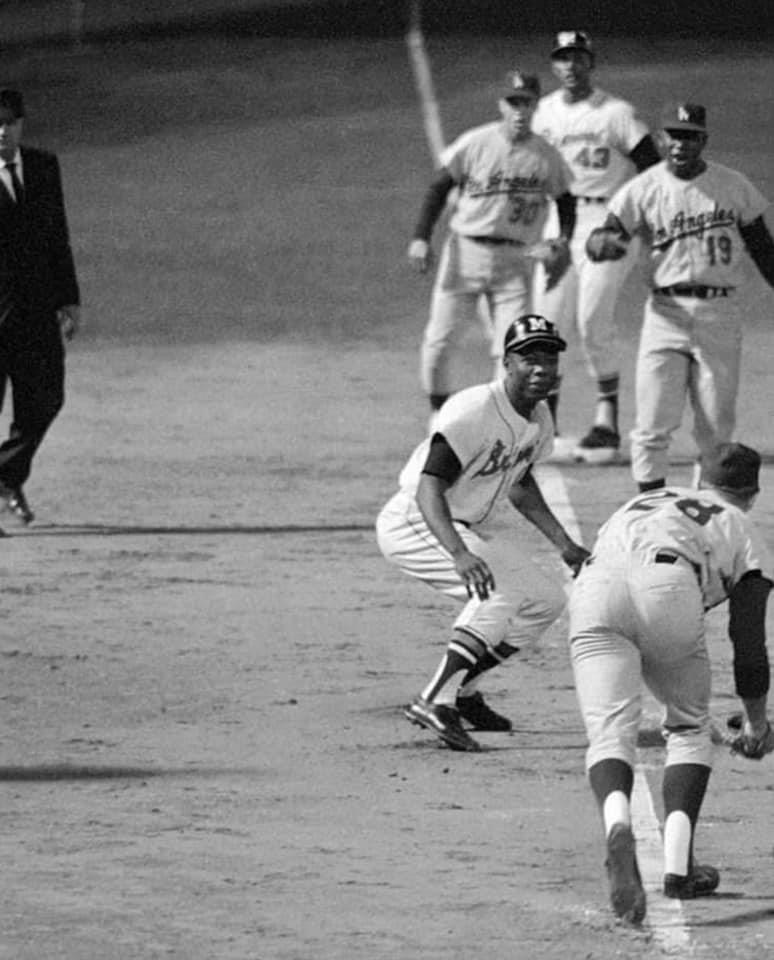Joe Adcock Stats & Facts
VINTAGE BASEBALL MEMORABILIA
Vintage Baseball Memorabilia
Joe Adcock
Positions: First Baseman and Leftfielder
Bats: Right • Throws: Right
6-4, 210lb (193cm, 95kg)
Born: October 30, 1927 in Coushatta, LA
Died: May 3, 1999 in Coushatta, LA
Buried: Holly Springs Cemetery, Martin, LA
High School: Coushatta HS (Coushatta, LA)
School: Louisiana State University (Baton Rouge, LA)
Debut: April 23, 1950 (8,269th in MLB history)
vs. PIT 4 AB, 2 H, 0 HR, 0 RBI, 0 SB
Last Game: October 1, 1966
vs. CLE 3 AB, 0 H, 0 HR, 0 RBI, 0 SB
Full Name: Joseph Wilbur Adcock
View Player Bio from the SABR BioProject
Nine Players Who Debuted in 1950
Joe Adcock
Gus Bell
Jimmy Piersall
Jackie Jensen
Jim Busby
Chico Carrasquel
Billy Martin
Lew Burdette
Whitey Ford
Notable Events and Chronology for Joe Adcock Career
Biography
Injuries and spending most of his career playing under a platoon system greatly diminished the overall numbers Joe Adcock compiled over the course of his 17 major league seasons. The 6’4”, 220-pound right-handed hitting slugger accumulated as many as 500 official at-bats only four times during his career, spent primarily with the Milwaukee Braves. Adcock also had the misfortune of being overshadowed by Hall of Famers Hank Aaron and Eddie Mathews during his time in Milwaukee. Nevertheless, the first baseman established himself as one of the National League’s most potent hitters in his 10 years with the Braves, placing among the senior circuit’s leaders in home runs five times and finishing near the top of the league rankings in RBIs on three separate occasions. When Adcock left the game at the conclusion of the 1966 campaign, he retired as the 20th most prolific home run hitter of all time, and with more homers than all but six right-handed batters in the history of the sport.
BIOGRAPHY:
Born in Coushatta, Louisiana on October 30, 1927, Joseph Wilbur Adcock attended LSU on a basketball scholarship for one year before signing to play professional baseball with the Cincinnati Reds in 1947. Nicknamed “Billy Joe” after Vanderbilt University basketball star Billy Joe Adcock, the powerfully-built first baseman spent three years in Cincinnati’s farm system before finally joining the team at the start of the 1950 campaign. He spent his rookie season primarily in the outfield, also being used occasionally to spell starting first baseman Ted Kluszewski against left-handed pitching. Appearing in a total of 102 games, Adcock batted .293, hit eight home runs, and knocked in 55 runs.
With Kluszewski firmly entrenched at first base for Cincinnati, the team continued to play Adcock out of position in each of the next two seasons. The natural first baseman also gradually became dissatisfied with his lack of playing time. Used primarily against opposing left-handers, Adcock failed to collect as many as 400 official at-bats either year, limiting him to a total of only 23 home runs. Unhappy with his situation in Cincinnati, Adcock requested a trade to another team. In response, the Reds dealt him to the Braves, including him as part of a four-team trade that also involved the Phillies and Dodgers.
DEVELOPMENT INTO TOP SLUGGER IN MILWAUKEE:
Joining the Braves in their first year in Milwaukee, Adcock immediately assumed the team’s starting first base job, providing in the process offensive support to MVP candidate Eddie Mathews. Appearing in 157 games for the Braves, Adcock finished the year with 18 home runs, 80 runs batted in, and a .285 batting average. The slugging first baseman gained a degree of notoriety in late April when he became the first player to hit a home run into the distant center field bleachers at the Polo Grounds. Only two other players – Hank Aaron and Lou Brock – eventually matched Adcock’s feat.
Aaron joined Mathews and Adcock in the middle of Milwaukee’s batting order the following year, giving the Braves one of the league’s most formidable hitting trios. Although an injury forced Adcock to miss three weeks of the campaign, he established new career highs with 23 home runs, 87 runs batted in, and a .308 batting average. The first baseman had arguably the greatest offensive game in baseball history on July 31, when he hit four home runs and a double against the Dodgers at Ebbets Field. His 18 total bases still stand as the single-game record. At the time, Adcock was only the fifth player of the modern era to hit four home runs in one game. Five other men have since accomplished the feat.
A broken arm in 1955 and broken leg in 1957 caused Adcock to miss a significant amount of playing time each season. However, he had perhaps his finest all-around year in 1956, when he finished second in the league with 38 home runs, 103 runs batted in, and a .597 slugging percentage, while also compiling a .291 batting average. Despite appearing in only 65 games during the 1957 regular season, Adcock returned to the Braves in time to take part in their seven-game World Series victory over the Yankees. He didn’t fare particularly well in the Fall Classic, though, batting just .200 and driving in only two runs.
Milwaukee returned to the World Series in 1958, with Adcock spending most of the season platooning at first base with the left-handed hitting Frank Torre. Compiling only 320 official at-bats, Adcock still managed to hit 19 home runs and knock in 54 runs, while batting .275. The Braves again faced the Yankees in the World Series, this time losing to New York in seven games. Adcock failed to hit a homer or drive in a run in his four starts, but posted a batting average of .308.
Adcock again found himself being platooned much of the time in 1959. Still, he hit 25 home runs, knocked in 76 runs, and batted .292, in barely over 400 official at-bats. It was during the 1959 campaign that Adcock delivered the most famous blow of his career.
BRINGING AN END TO PERFECTION:
Milwaukee’s Lew Burdette and Pittsburgh’s Harvey Haddix locked up in an epic pitching duel on May 26, 1959 that entered the 13th inning without a run being scored. Although Burdette pitched brilliantly for the Braves, he found himself being overshadowed by Haddix, who worked 12 perfect innings for the Pirates. However, Milwaukee’s Felix Mantilla led off the bottom of the 13th by reaching first base on an error. After Eddie Mathews sacrificed Mantilla to second, Haddix intentionally walked Hank Aaron. Adcock followed with a blast over the left field wall that apparently gave the Braves a 3-0 victory. But Aaron, seeing Mantilla score the winning run ahead of him and believing that Adcock’s hit had failed to clear the outfield wall, headed back towards the Milwaukee dugout. Adcock subsequently passed him on the base paths, causing the former to be called out. The official ruling ended up being a double for Adcock and a 1-0 victory for the Braves.
Adcock recalled the game when Haddix died in January 1994: “He (Haddix) knew what he had in mind when he let the ball loose. The wind had been blowing in all night, and maybe it was a freak because when I came to bat, the flag in center field was still. I was thinking he’d been keeping the ball away from me all night and maybe he’d do it again, and he did, and I hit it.”
After an outstanding year in 1960 in which Adcock earned All-Star honors for the only time in his career by hitting 25 home runs, driving in 91 runs, and batting .298, he performed even better in 1961. Appearing in 152 games for the Braves, Adcock batted .285 and placed among the league leaders with 35 homers and a career-high 108 runs batted in.
FINAL YEARS AS AN ACTIVE PLAYER AND TRANSITION TO MANAGING:
Reduced to part-time status again in 1962, Adcock batted just .248 but hammered 29 home runs and knocked in 78 runs in only 391 official at-bats. The Braves elected to trade the 35-year-old first baseman to Cleveland during the off-season, where Adcock platooned with the left-handed hitting Fred Whitfield. After one year with the Indians, Adcock moved on to the Angels, with whom he spent his final three seasons as a part-time player. He retired at the conclusion of the 1966 campaign with 336 career home runs, 1,122 runs batted in, and a .277 batting average. Although Adcock never led the league in any major offensive category, he topped all N.L. first basemen in putouts twice, and in fielding percentage three times.
After retiring as an active player, Adcock managed Cleveland in 1967, piloting the Indians to a record of 75-87 and an eighth-place finish in a 10-team league. Fired at season’s end, Adcock received widespread criticism for ironically choosing to platoon the team’s top two sluggers, Leon Wagner and Rocky Colavito. After being replaced in Cleveland by Alvin Dark, Adcock managed two more years in the minor leagues before settling down at his 288-acre ranch in Coushatta to raise horses. He died there in 1999 at the age of 71 after suffering from Alzheimer’s Disease.
@ET-DC@eyJkeW5hbWljIjp0cnVlLCJjb250ZW50IjoicG9zdF90YWdzIiwic2V0dGluZ3MiOnsiYmVmb3JlIjoiTGVhcm4gTW9yZSBhYm91dCB0aGUgdGVhbXMsIHBsYXllcnMsIGJhbGwgcGFya3MgYW5kIGV2ZW50cyB0aGF0IGhhcHBlbmVkIG9uIHRoaXMgZGF0ZSBpbiBoaXN0b3J5IC0gLSAtIC0gLSAtIC0gIiwiYWZ0ZXIiOiIiLCJsaW5rX3RvX3Rlcm1fcGFnZSI6Im9uIiwic2VwYXJhdG9yIjoiIHwgIiwiY2F0ZWdvcnlfdHlwZSI6InBvc3RfdGFnIn19@

